
Exploring JSM ITSM Solutions for Efficiency
Streamline ITIL-Aligned Service Management with JSM ITSM
JSM ITSM is the number one choice for ITIL-aligned service management processes, recommended to reduce complexity and make customer support, change, asset, and request management a seamless integrated process: Jira Service Management.
This comprehensive suite includes:
- A full set of Jira service management applications that share a native, purpose-built architecture and best-practice process flows
- The industry’s leading service desk solution
- A closed-loop change process tied to incidents and problems
- Self-service request catalog for IT, security, and, business needs
- Tracking of incident response times and service desk performance against SLAs
- Asset and software license lifecycle and compliance management
- Real-time performance and ROI metrics reporting
With Jira Service Management, you will:
- Prioritize support activities and focus on critical business services
- Increase staff productivity and consistency by automating processes, policies, and tasks
- Reduce MTTR and eliminate recurring incidents through embedded problem and knowledge management processes
- Reduce IT support costs through self-service call-deflection
- Keep IT staff “connected” with a pre-configured, easy-to-use solution optimized for handheld devices
Incident and Problem Management with Jira Service Management
A main part of the Jira Service Management is the industry’s leading incident management Solution. It enables comprehensive, best practice-based incident management and problem management processes via intuitive, easily adopted, enterprise scale technology. This product provides:
- Distinct, yet fully integrated, ITIL based incident management and problem management applications
- Single, purpose-built Data Base allowing for business awareness of service desk functions
- Powerful, proven workflow engine enabling automation of service desk processes
- Seamless integration with other service management solutions (change, asset, service level, service request, identity, knowledge)
- Simplified interfaces for rapid incident and problem creation and closure
- Multi-tenant architecture supporting service desk consolidation for global enterprises
- Built-in process flow taskbar and interactive process model based on ITIL
With JSM as a stand-alone solution or as part of Atlassian Product family, you will:
- Enforce best practice processes
- Improve key metrics such as first call resolution, mean time to repair, reoccurring incidents
- Reduce call volumes and encourage user self-sufficiency by letting users search FAQs, known solutions, and workarounds to common issues
- Prevent future incidents from occurring
- Increase customer satisfaction ratings
- Align service desk functions with business drivers
- Enable service desk consolidation
Service Request Management and Service Catalog
Enable all areas of your business with a consistent, accurate view of IT services with Jira Service Catalog function. The Service Catalog helps your IT department gain credibility in your organization:
- Cost transparency to the business
- Improved demand management
- Create value along key business dimensions
- More holistic view of IT performance
Jira Service Level Management
Define, Track, and Deliver the Speed and Quality of Service Your Customers Expect. Define service level requirements, track service levels, measure service level compliance, and drive continuous service improvement initiatives, so that IT can proactively meet the needs of the business.
- Manages service levels for both the delivery and support of business services
- Provides a fast, repeatable process for defining and capturing service level measurements using out-of-the-box templates and data collectors
- Delivers service level information directly to the service catalog to allow customers to request offerings based on service level
- Proactively delivers service level data to IT consoles, enabling staff to prioritize activities based on business relevance
- Provides real-time visualization of service level target and agreement compliance data
- Automatically calculates the monetary impact cost, as well as compliance penalties and rewards
- Performs compliance and cost trending to identify areas for process and operational Improvements
With Jira Service Level Management, you will:
- Increase business impact — Initially target priority areas and leverage incremental product capabilities over time to improve service level management maturity.
- Increase transparency — Provide the business and IT with a shared view of service level requirements, current service levels delivered, and compliance against service targets.
- Increase customer satisfaction — Enable IT staff to identify and act on incidents with highest business urgency and use trend data to proactively identify and track continuous service improvement plans.
- Reduce IT costs — Eliminate time-consuming and labor-intensive data gathering, allocate staff and infrastructure resources more efficiently, and proactively manage priorities to avoid service penalties.
Change Management
Part of the Jira Service Management. Gain control of change management
processes and eliminate the leading cause of unplanned IT failures, manage change across the entire IT infrastructure – from data centers to desktop – according to ITIL best practices and organizational policy. This product provides:
- Distinct, yet fully integrated, ITIL based change and release management applications Single, purpose built CMDB allowing for business awareness within the change and release process
- Powerful, proven workflow engine enabling automation of change and release approvals
- Seamless integration with other service management solutions (service desk, asset, service level, service request, knowledge)
- Simplified interfaces and templates for rapid change and release creation and processing
With Jira Change Management, you will:
- Enforce best practice processes
- Improve metrics such as incidents caused by change, change backout rates, failed changes
- Possess change management visibility like never before with collision detection, change impact analysis and simulation and business-oriented change dashboards
- Align change management functions with business drivers
- Realize closed loop change and configuration with seamless integration to configuration automation solution
Jira Asset Management
Automate IT asset configuration to enable decisions based on your most current data, Manage the entire lifecycle of your IT assets — from procurement through retirement. This product:
Discovers all IT assets — mainframe, distributed, and virtual
- Enable proactive contract management
- Gain visibility into asset costs
- Execute intelligent IT change decisions
- Seamlessly integrate into ITIL service support workflows
Drive problem management practices through accurate and current configuration Unlike legacy CMDBs, a flexible and open data structure allows teams to manage any asset. Efficiently track ownership and lifecycles, and reduce costs.
 Asset tracking:
Asset tracking:
Track IT assets for inventory management, auditing, and more. Access asset details from Jira tickets to make informed decisions and resolve issues quickly.
 Asset discovery:
Asset discovery:
Scan your network to discover and populate your asset repository or CMDB. Detect infrastructure changes, identify shadow IT assets, and improve support.
 Asset reviews:
Asset reviews:
Pinpoint ways to increase efficiency, reduce support costs, and maximize the value of your IT asset lifecycle.
Configuration Management
Gain visibility into the infrastructure that supports applications and services. Anticipate the downstream impact of changes, so your dev and ops teams can manage risk and rapidly resolve incidents when they do occur.
 Dependency mapping:
Dependency mapping:
View the dependencies between configuration items or assets and services to assess the risk of changes, resolve incidents, and uncover the root cause of problems.
 Infrastructure discovery:
Infrastructure discovery:
Scan your network to discover and populate your asset repository or CMDB. Detect infrastructure changes, identify shadow IT assets, and improve support.
 Automation:
Automation:
Automate updates to statuses, dependencies, and other attributes, create issues based on unauthorized changes, and add new assets directly from information entered into a Jira ticket.
 Importers and integrations:
Importers and integrations:
Migrate or federate asset information. Import from common file types and integrate with leading third-party tools.
We can link every employee to his assets including hardware or even the facilities and we can see all the open tickets related to his assets
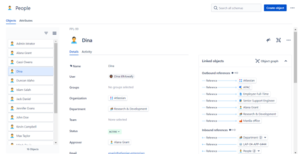
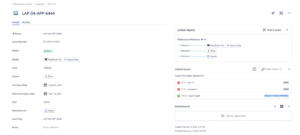
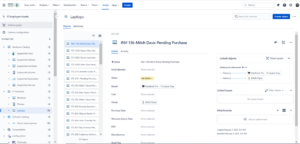
We can have a QR code for each asset on JIRA
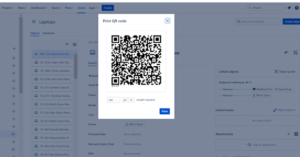
Jira can also auto-detect the user’s assets while creating the ticket. This feature, known as asset management, helps in identifying the affected assets quickly, thereby reducing the time taken to resolve the issue. Additionally, Jira can track the status of these assets and provide real-time updates to the agents, ensuring that they have all the necessary information to resolve the issue. Particularly in large organizations where there are multiple servers and applications that need to be monitored, this feature proves to be invaluable. By automating asset management, Jira not only helps organizations save time and resources but also enhances their overall efficiency.
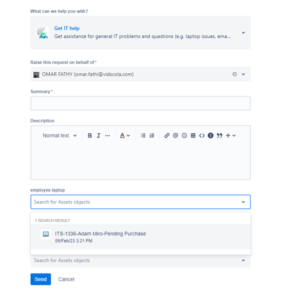
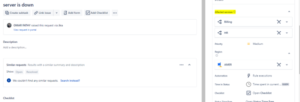
Jira Service Management Features
![]()
Simplicity is key. Jira has the flexibility to help you build a workflow that mirrors your team’s unique way of working, but having too many statuses and transitions can create unnecessary complexity, making your workflow harder to manage and use. Additionally, collaboration can be challenging if many teams start using wildly different workflows. Aim for simple and scalable workflows.
![]()
Review and improve workflows often. Workflows should be representative of your team’s processes. Any major changes in your team’s working style should be reflected in your Jira workflow so teams can move work forward seamlessly.

Document your workflow. Help your team understand how they should be leveraging Jira to track and manage their work by documenting your workflow.
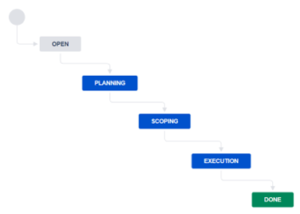
Jira workflows are composed of 3 unique elements:
- Status: A status indicates where the issue is within the workflow. Some examples may include: Open, In Progress, In Review, Scheduled, Pending, Waiting, etc.
- Transition: A transition represents the action being taken to move an issue from status to status. A transition is a one-way link, so if an issue needs to move back and forth between two statuses, two transitions need to be created.
- Resolution: When a task is completed and no longer open, it needs a resolution status. Some examples may include: Closed, Resolved, Shipped, Completed, Done, Finalized, Won’t Do, etc. (This is only available in company-managed projects).
Smart Forms
Build dynamic forms and checklists in Jira Service Management without code or custom fields.
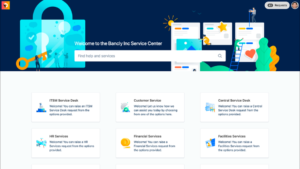
Use Cases
ITSM Solutions: Jira Service Management is purpose-built for ITSM
Jira Service Management helps IT support, operations, and business teams deliver exceptional service experiences to employees and customers.




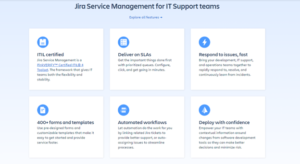
IT Operations: Jira Service Management for IT Operations teams
An easy-to-use solution that brings software development and IT onto the same platform to deliver and manage services. Jira Service Management connects operations managers, developers, and Site Reliability Engineers (SREs) with the context they need to be proactive and keep systems up and running.
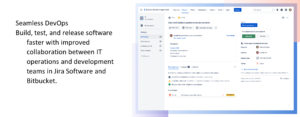
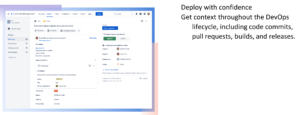
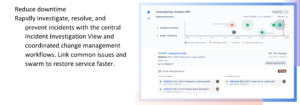
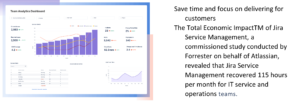
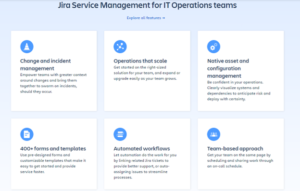
Business Teams:
Jira Service Management isn’t just for IT—it’s a tool that can bring a service-oriented mindset to every part of your business. With Jira Service Management, teams across the enterprise can deliver exceptional service quickly and efficiently.
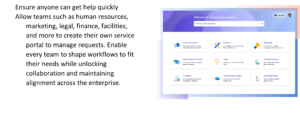
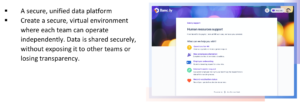
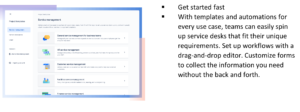
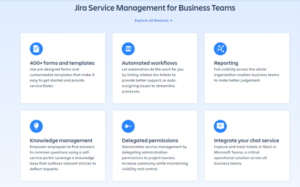
How business teams can use Jira Service Management?
From finance to human resources to legal or marketing, any business team can use Jira Service Management to deliver exceptional service experiences.
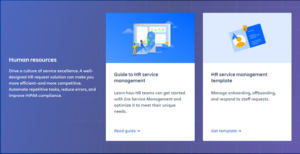
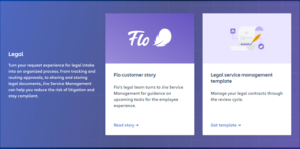

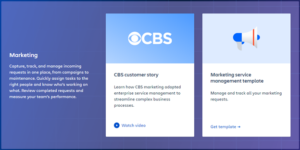
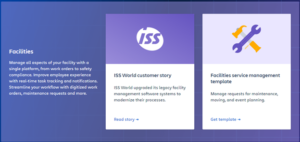
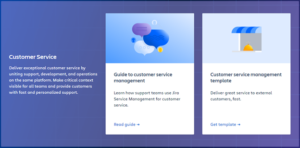
Smart Issue Management
Use Automated way to assign, group, and suggest remediation for issues—then automate response workflows.
Save time, keep your team focused, and help work flow with no-code automation.
Once issues are captured, prioritize them based on their level of importance, urgency, and the team’s capacity. Assign issues with just a few keystrokes, and then, easily prioritize them by dragging and dropping them into your team’s backlog or to-do column. By maintaining a single source of truth, you ensure that everyone stays on the same page and that the team is focused on addressing the highest priority items first.
Ensure the right people are notified at the right time. New Issue can be routed to the correct team member immediately. Notifications within Jira are not just @mentions, but can also be configured to update someone automatically when a status change occurs. Customize your project, so as things change.
Automate any task or process with a few clicks
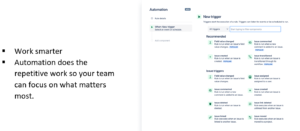
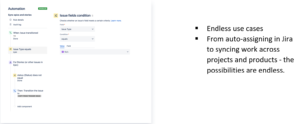
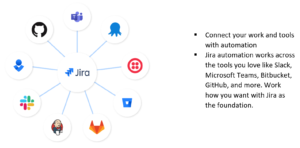
Dashboard & Reports
Jira has a range of reports that enable you to visualize trends about your project and issues
Dashboards:
- Your dashboard is the main display you see when you log in to Jira.
- You can create multiple dashboards from different projects
- You can track of assignments and issues you’re working on
- You can customize the layout of your Dashboard
Reports:
- Deliver value to customers faster with real-time insights at your fingertips. Jira Software enables teams to make data-driven decisions with agile reports
- Critical Insight into Your Jira Projects
- Improved Data-Driven Decisions
- Better Collaboration Among Team Members
- Enhanced Transparency
- Levels of Jira Reports:
- Individual Reports
- Time Reports
- Team Reports
- Project Reports
- Cross-Project Management Reports
- Jira Service Management Reports
- Examples on reports that can be achieved on Jira:
- Average Number of incidents (monthly)
- Average Number of service requests (monthly)
- Average Number of problems (monthly)
- Average Number of CR (monthly)
- Average Number of Call (monthly)
- Average Number of Support User
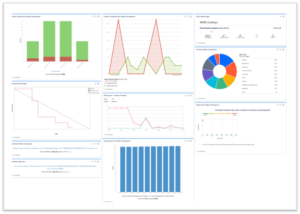
Notifications
Jira can send email notifications to users when significant events occur (e.g. creation of an issue; completion of an issue).
Notifications play a crucial role in keeping team members informed about necessary actions or significant changes. Jira can automatically notify the appropriate individuals via email when specific events occur in a project, such as the creation or resolution of an issue. You can customize these notifications by selecting specific people, groups, or roles to receive updates for various events. For instance, in this example, the Reporter of the issue receives a notification when the issue is resolved.

https://www.atlassian.com/software/jira/service-management
